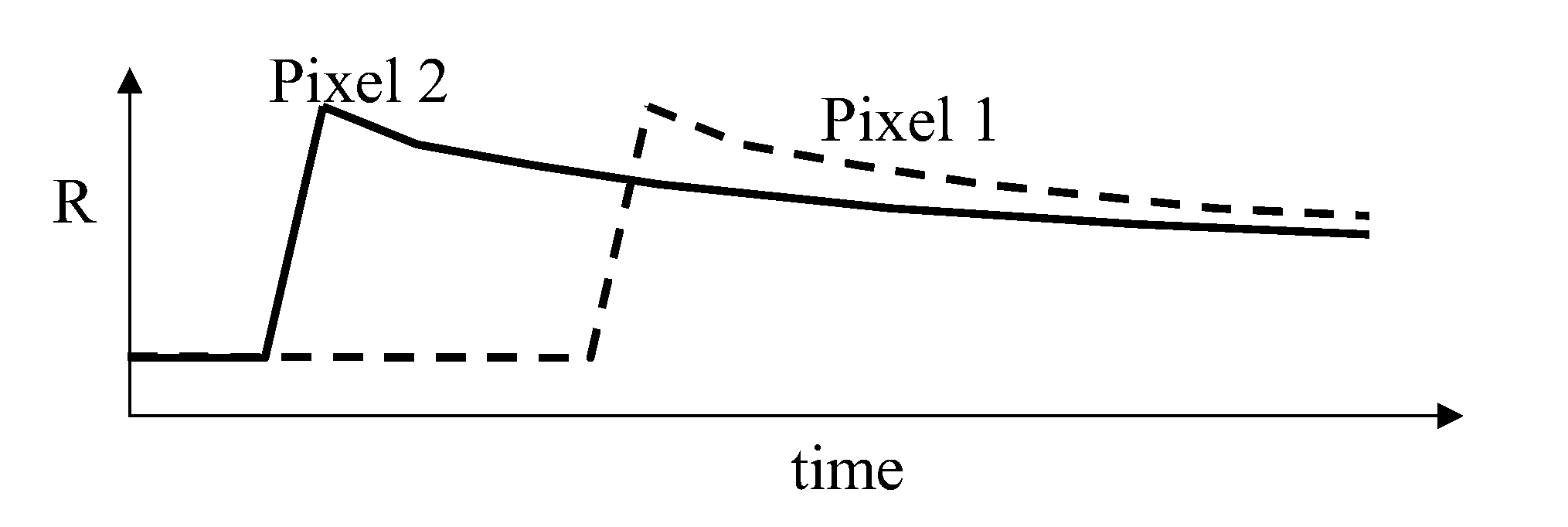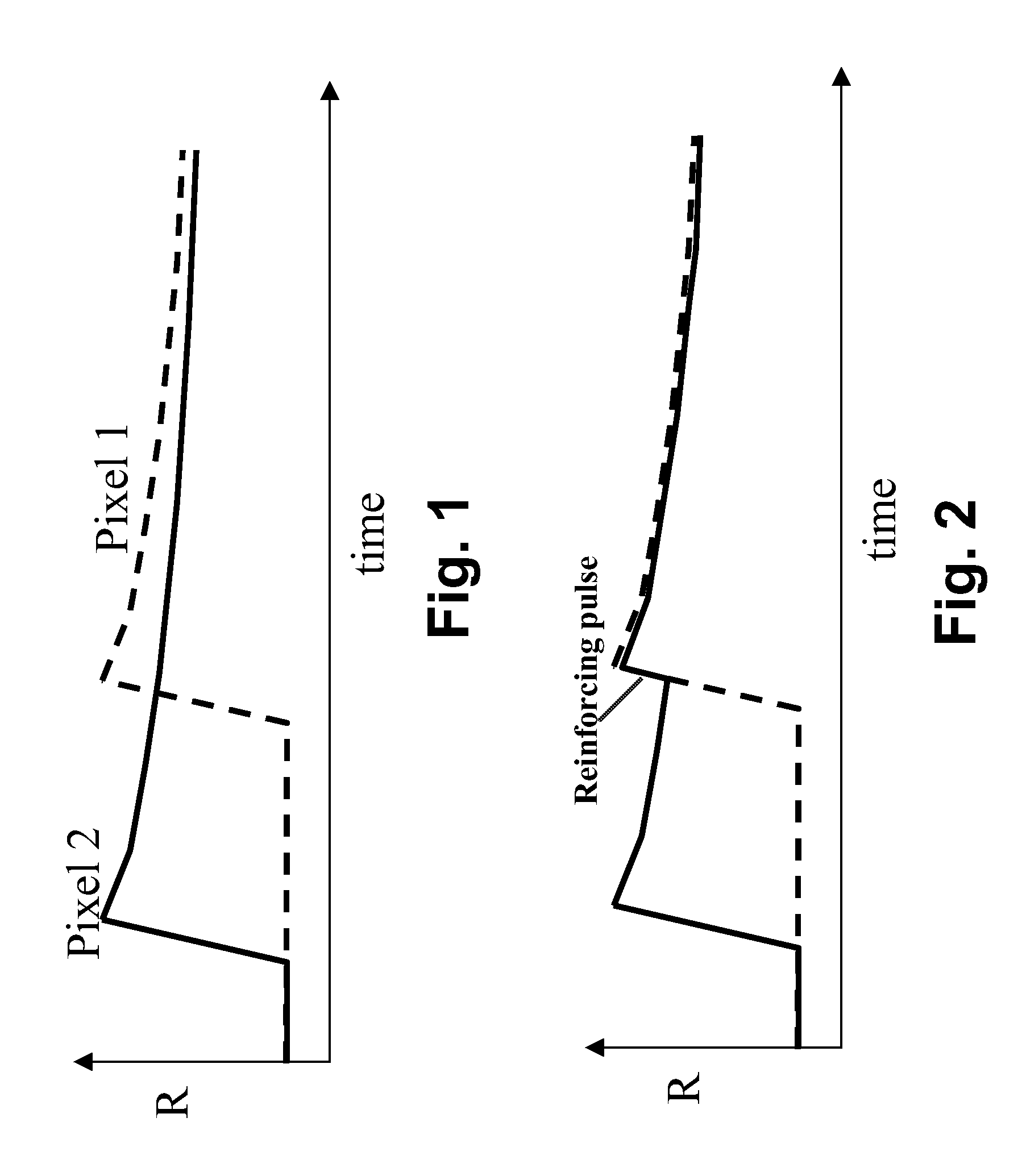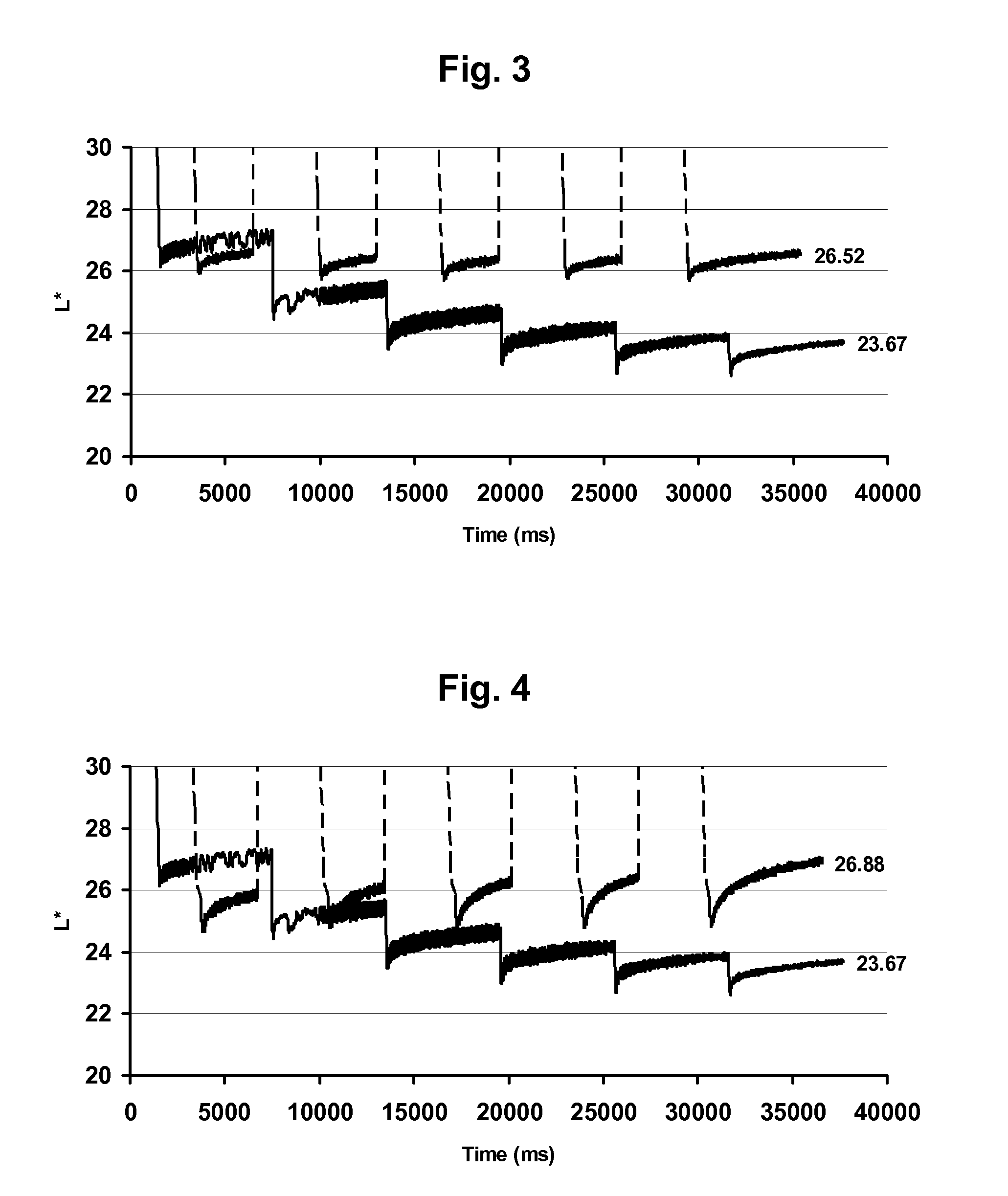Methods for driving electro-optic displays
a technology of electro-optic displays and drives, applied in the direction of instruments, computing, electric digital data processing, etc., can solve the problem that the waveforms used to drive pixels of electro-optic displays from one optical state to another may be quite complex
- Summary
- Abstract
- Description
- Claims
- Application Information
AI Technical Summary
Benefits of technology
Problems solved by technology
Method used
Image
Examples
Embodiment Construction
[0067] As already indicated, a first aspect of this invention relates to a method of driving a bistable electro-optic display in which a reinforcing pulse, which does not effect a gross change in the optical state of a pixel, is applied to one or more pixels during or shortly after the application to another pixel of a drive pulse which does change the optical state of that pixel. The reinforcing pulse serves to match the color of the pixel receiving the reinforcing pulse to that of the pixel receiving the drive pulse and, if the two pixels are edge-adjacent, reduces edge ghosting between the two pixels.
[0068] As compared with the refresh pulse driving method of the aforementioned 2005 / 0270261, the present method may reduce the number of reinforcing pulses needed, since if the display is not updated for a long period, no reinforcing pulses will be applied. (It is of course possible to combine the present methods with the refresh pulse method by ensuring that, if any pixel does not ...
PUM
 Login to View More
Login to View More Abstract
Description
Claims
Application Information
 Login to View More
Login to View More - R&D
- Intellectual Property
- Life Sciences
- Materials
- Tech Scout
- Unparalleled Data Quality
- Higher Quality Content
- 60% Fewer Hallucinations
Browse by: Latest US Patents, China's latest patents, Technical Efficacy Thesaurus, Application Domain, Technology Topic, Popular Technical Reports.
© 2025 PatSnap. All rights reserved.Legal|Privacy policy|Modern Slavery Act Transparency Statement|Sitemap|About US| Contact US: help@patsnap.com



